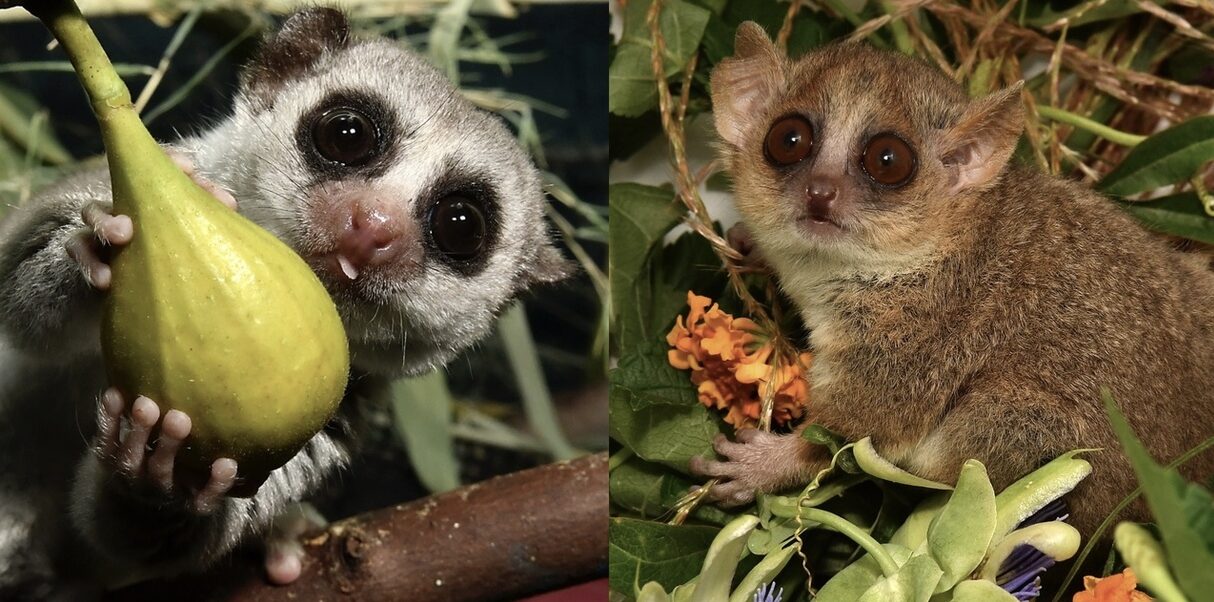Posted September 2, 2025. Tristan is a Ph.D. candidate in Biology at Duke University.

Fat-tailed dwarf lemur (left) and grey mouse lemur (right) at the Duke Lemur Center. In Madagascar, these species are sympatric, meaning they occupy the same geographic range without interbreeding.
Research Focus: Mechanisms of niche partitioning in sympatric nocturnal lemurs
In the forests of Madagascar, several species of small, nocturnal lemurs live side by side. They’re similar in size and habits, yet somehow they managed to evolve into separate species and avoid stepping on each other’s toes. This project explores how that’s possible and whether lemurs in captivity behave the same way as those in the wild.
Our research focuses on two species: Microcebus murinus (grey mouse lemurs) and Cheirogaleus medius (fat-tailed dwarf lemurs). The idea was to see how their feeding habits, sleeping spots, and problem-solving skills help them carve out their own space in the same forest.
To do this, researchers ran three simple experiments with individuals from the DLC:
Puzzle Challenge: Lemurs got a box with multiple doors leading to hidden treats. How fast they figured it out showed how creative and clever they are. The researchers found no great difference between the two species.
Motivation Test: Most of the treat doors were blocked. Researchers watched how long the lemurs keep trying, showing how determined they are. The researchers found the mouse lemurs were the more determined group and dubbed them as “working harder, not smarter.”
Food Taste Test: Lemurs chose between different foods like banana, mealworms, lettuce, etc. Their choices revealed what they like best. The dwarf lemurs had a more limited palate while the mouse lemurs showed a greater diversity in their selections.
Why does this matter? As forests shrink, more animals are squeezed into smaller spaces. Understanding how species share resources helps us protect them. Plus, many scientists study lemurs in zoos or research centers but we need to know if those lemurs act like their wild counterparts. This study will help answer that.
In short, it’s a peek into the secret lives of Madagascar’s tiniest primates and how they manage to live together in their ever-shrinking world.

